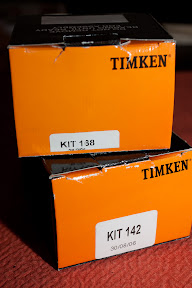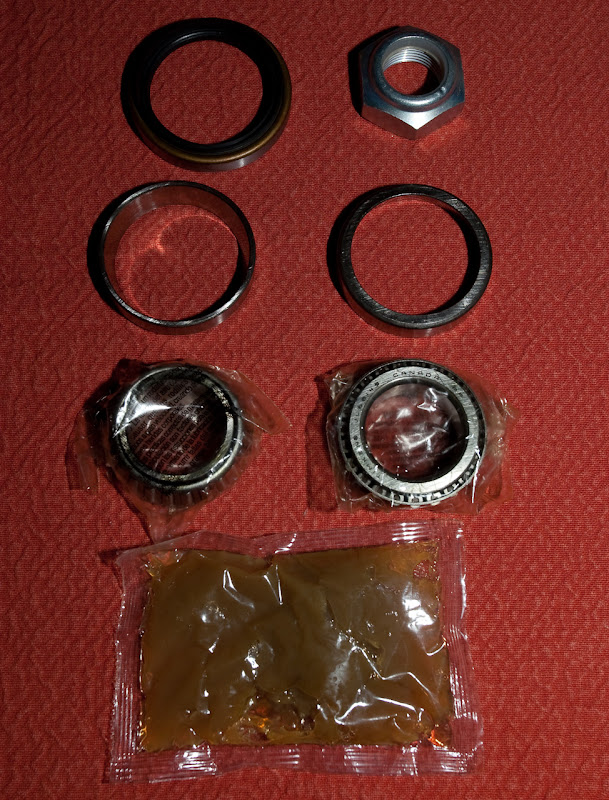
We’re at the stage where things have to get really hands on before we can make progress. The two major things we need to do are arrange aluminium paneling, and fit the brake lines. Our intention is to do this “ourselves”, without buying the pre-made kit. While this should save us some money, it’s a slow process of finding out all the bits needed, what they are called and where they all go. You can’t phone up a hydraulic shop and say “I want a funny copper-coloured thingy that is part of the braking system”. They get rude. Yes, I found that out myself.
What we have done is bought some more bolts (bolt list will be created) and some rivets. We’ve also got our front wheel bearings. Much advice was given on the forum, with the conclusion that it’s better to spend more to spend less. They are Timken kits, and come quite well recommended. The left and right kits are different (142 vs 168), but the only real difference is that the hub nut for the reverse thread side is a different colour.

The kits include bearings and outer races, hub nut, oil seal and even a packet of grease.

As for the rivets, the chief concern has been the angle for countersinking.

I have read some posts that indicate that the angle is probably 110°, however I thought I’d check. So I took a macro photo with my close-up lens, strongly back-lit to cast a silhouette. Then I upped the contrast and saturation to emphasise the rivet, and measured the angle on the PC. There are probably better ways to enhance the image, but I thought the result looked cool. As can be seen from the picture, the best fit is 120°.

The amusing thing is that none of the hardware stores I called knew about this. The one that the rivets came from tried to sell me a 90° countersink bit, for R180. Nobody else could offer a suggestion on how to perform the countersinking. A comment from a colleague and a bit of googling provided the answer. General purpose metal drill-bits are usually sharpened to 118° – which is close enough. So some form of depth protection will be created (possibly a tube of the right length serving as a guard) and a normal 6mm bit.
Now to order the aluminium and figure out all the right bits for the brake system.
B